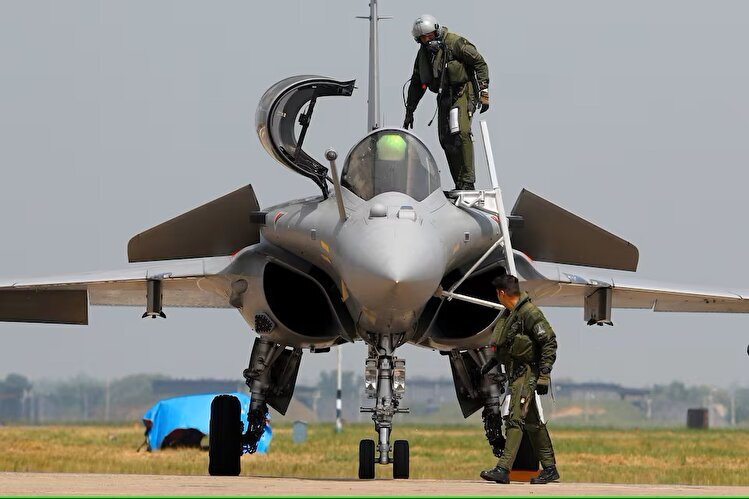How Did the Pakistani Army Shoot Down the "Indian Jewel"?
TEHRAN (Defapress) - Shortly after midnight on May 7th, the positions of dozens of enemy fighter jets suddenly appeared on the monitors in the operations room of the Pakistani Army. General Zaheer Sidhu, Commander of the Pakistani Air Force, who had spent many days waiting to counter an Indian attack, was lying on a mattress in that very room at that moment.

New Delhi had accused Islamabad of supporting militants who had carried out a terrorist attack in Indian Kashmir the previous month, killing 26 civilians. Despite Islamabad's denial of any involvement, India responded with airstrikes against Pakistan. In retaliation, General Sidhu ordered the launch of Pakistan's prized J-10 fighters. He instructed the pilots to target the Rafale jets, considered the crown jewels of the Indian Air Force, which had never been shot down in any battle.
During the hour-long dogfight that took place in darkness, approximately 110 fighter jets engaged in what became one of the world's largest aerial battles. The downing of at least one Rafale jet stunned global military experts and challenged the effectiveness of Western military equipment against Chinese counterparts. Shares of Dassault, the manufacturer of the Rafale, plummeted. Indonesia, which was in the process of placing an order for Rafales, hesitated and announced it was considering purchasing J-10s instead, a major success for China's defense industry.
But how did Pakistan hunt India's crown jewel? It appears the interception of the Rafale was entirely due to an intelligence failure by the Indian military. The Indian Army had miscalculated the range of the PL-15 air-to-air missiles fired by the J-10s. In reality, Indian commanders had falsely reassured their Rafale pilots by providing incorrect information about the missiles' range.
The Indian Army, relying on the nominal range of export versions of the PL-15 missile, had expected a maximum range of 150 km. However, the missile that downed the Rafale had been fired from 200 km away. Additionally, Islamabad's electronic warfare capabilities confused Indian pilots. Attacks on sensors and communication systems reduced the situational awareness of Rafale pilots.
Pakistani military commanders also told Reuters they had created a "kill chain" by integrating air, ground, and space-based sensors. This network included a system developed by Pakistan that synchronized Chinese military hardware with other equipment. This system allowed J-10 pilots to turn off their radars and fly undetected.
In the first hour of the attack, the Indian Air Force deployed about 70 aircraft, more than Pakistan had anticipated, yet this created a target-rich environment for PL-15 missiles. It should be noted that neither side's aircraft crossed into the other's airspace during the engagement.
India's military attaché in Jakarta stated during a university seminar: "New Delhi lost some aircraft solely due to political restrictions prohibiting attacks on Pakistan's military infrastructure and air defense systems."
The Indian Army later claimed that Pakistan had received valuable radar and satellite intelligence from China during the battle. A Chinese Foreign Ministry spokesperson told reporters: "This was part of normal cooperation between the two countries and was not aimed at any third party."
In July, the Commander of the Chinese Air Force visited Pakistan to investigate how Islamabad had used Chinese equipment to establish the "kill chain" that targeted the Rafale jets. The Pakistani military confirmed in a statement that China had shown great interest in leveraging Pakistan's operational experience to shape "combined operations."
